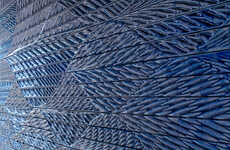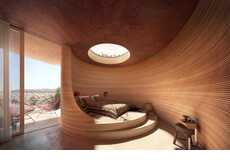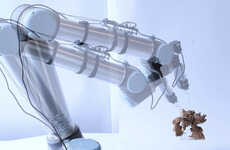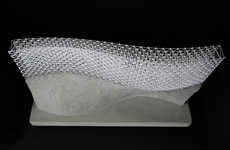
This Amsterdam Bridge Will Be Built Using Industrial Robots
Rahul Kalvapalle — June 15, 2015 — Art & Design
3D-printing research and development firm MX3D is working on an ambitious project that involves creating a 3D-printed bridge across a canal in Amsterdam. The bridge will be printed across the canal using robots that will print their own supports and slowly move across the water, creating the bridge as they go.
The robots will print using steel, with specially designed arms used to heat the steel to 1,500 degrees Centigrade before welding the structure into shape. This will allow for the creation of structures that are complex, strong, durable and functional.
This 3D-printed bridge project is about more than building a bridge itself -- it's about demonstrating how 3D printing technology can actually be used for large-scale and functional projects.
The robots will print using steel, with specially designed arms used to heat the steel to 1,500 degrees Centigrade before welding the structure into shape. This will allow for the creation of structures that are complex, strong, durable and functional.
This 3D-printed bridge project is about more than building a bridge itself -- it's about demonstrating how 3D printing technology can actually be used for large-scale and functional projects.
Trend Themes
1. Large-scale 3D Printing - The use of 3D printing technology for creating large-scale structures, such as bridges, opens up new possibilities for construction and infrastructure projects.
2. Robotic Construction - The integration of robots in construction processes, like the ones used to print the 3D bridge in Amsterdam, streamlines the construction process and reduces human involvement.
3. Functional 3D Printing - The ability to create functional and durable structures through 3D printing showcases the potential for manufacturing complex and strong products.
Industry Implications
1. Construction - The construction industry can leverage large-scale 3D printing and robotic construction to enhance efficiency, reduce costs, and create innovative structures.
2. Infrastructure - 3D-printed bridges and other infrastructure projects demonstrate disruptive innovation opportunities in the field of infrastructure development and maintenance.
3. Manufacturing - Functional 3D printing techniques can revolutionize manufacturing processes by enabling the production of complex and durable products using additive manufacturing technology.
3.5
Score
Popularity
Activity
Freshness























